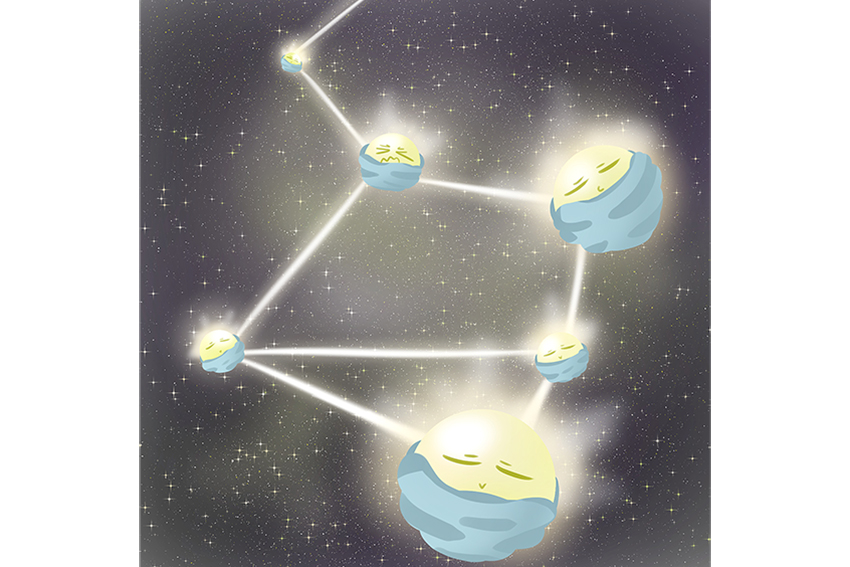While stars appear to be small beams of light, in reality they’re huge bodies of gas and heat located millions of light years away. A UT astronomer recently brought these stars to the small screen, allowing people to look deep into the universe.
Volker Bromm, a theoretical astrologer and astronomy professor, recently collaborated with the British Broadcasting Company to simulate the birth of the first star on the show “Cosmic Dawn: The Real Moment of Creation.” Bromm, who studies early star and galaxy formation using numerical simulations, created visualizations of the primordial cosmic gas forming the first star.
He used computer simulations at the Texas Advanced Computing Center located at the Pickle Research Center to create these visualizations. The British Broadcasting Company reached out to Bromm to appear on their science channel Horizon based on his previous work in astronomy.
“In a computer, you can simulate a region of the universe,” Bromm said. “You input the laws of physics into your code and the computer applies these laws. You can follow the evolution of the cosmic matter at whatever point [of time] you’re interested in.”
An equation, when entered into a computer, can create a simulation of the universe. This method can also be used to calculate how often new stars form. Bromm translated this simulation to the TV show “Cosmic Dawn: The Real Moment of Creation.”
Billions of years ago there was nothing in space and that the Big Bang then created space as we know it.
“The Big Bang is not like an explosion in space,” Bromm said.“It is the creation of time and space itself. It happened everywhere in space.”
After the Big Bang, space was a dark and empty void filled with hydrogen and helium gases. Then stars formed out of hydrogen, helium gases and traces of lithium left over from the Big Bang.
These primordial stars formed when the force of gravity overpowered any other opposing forces. Stars begin as a mix of cosmic gas and multiple particles moving at high speeds. Bromm explained that gravity must overcome the force of friction between the gas and particles in order to form a “star”.
“Without stars, we wouldn’t exist,” Bromm said.
The earliest stars had a short life span of about a few million years and were theorized to be a hundred times larger than the Sun. The gases that formed the first stars were hotter than the ones we have today, creating higher pressure. A higher gravity was then needed to hold this pressure, resulting in stars with larger masses.
After these first primordial stars exploded, they introduced elements like carbon, oxygen, magnesium and iron into space, creating more element-rich stars in their aftermath.
“They provide us light and heat but most importantly they have synthesized all the chemical elements that our bodies are made of in their deep interior,” Bromm said.
The speed of light is finite, so telescopes allow people to see distant objects as they were a long time ago. In 2018 NASA will launch the James Webb Space Telescope which will enable astronomers to look at cosmic "dark ages,” a time period that predates the formation of the first star.
“The beauty of astronomy is if you look at things very far away, like the light you see now, it has traveled a long time,” Bromm said. “That means that when you are looking out far into the distant universe you are looking back into time.”
As technology continues to improve, more powerful telescopes will allow astronomers to see even farther into space, allowing scientists to trace the entire history of star formation and study the origins of the chemical elements that produced life on Earth.
Students can watch Bromm and other astronomers break down the beginning of our universe below.















